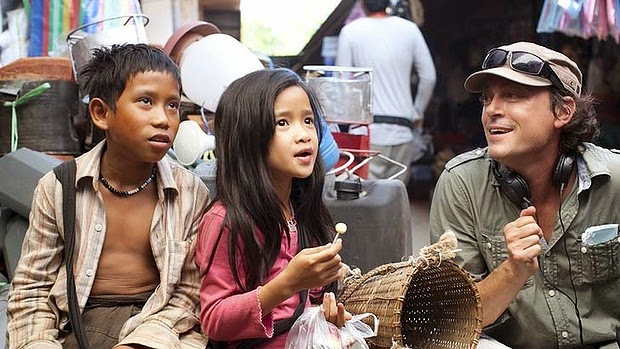Most of the modern day, shoot-‘em-up action movies resemble the nihilistic comics. No complexity is shown in weaving the characterization of these violent men. Forty five years ago, when Sam Peckinpah’s violent epic “The Wild Bunch” released it caused quite a stir. It’s gritty, uncompromising style and the harsh depiction of Wild West made Motion Picture Association of America to slap the film with an NC- 17 rating (released later as “director’s cut”) and held up the film's re-release for many months. Sam Peckinpah, one of the greatest American directors, was always accused of romanticizing or glorifying violence. Although one can’t deny that fact, his movies are not just about getting people killed. He told intense tales of male bonding, where honor and loyalty remained as the changeless codes. In films like “Straw Dogs”, “Bring me the Head of Alfredo Garcia” and “Wild Bunch” he set out to demythologize the American hero figure. He has also influenced a generation of film-makers like John Woo, Quentin Tarantino etc.
Some of the critics perceived “The Wild Bunch” as a
political allegory of America’s constant political intervention in political
countries. Peckinpah said that, “I am just trying to tell a simple tale about
bad men in changing times.” Allegory or not, this film turned violence into a
haunting poetry and summed up the corruption of guilt in the Old West. The film
is set in the year 1913, when US cautiously watched over from its border, while
Pancho Villa (Mexican revolutionary leader) tormented the corrupt Mexican
Government. It was also the era, when outlaw gangs were intently pursued by
lawmen, and the Wild West got slowly tamed down by civilization. At this time,
a gang of soldiers arrives at a small south Texas town of San Rafael. A group
of grimy children giggle as they watch a scorpion being eaten alive by a colony
of red ants. Amidst the soldier’s arrival, the bourgeoisie people of the town are
holding a temperance meeting. The soldiers enter the railroad office, but
suddenly start to rob the office of its cash receipts.
Pike Bishop (William Holden) is the leader of this group, an
aged but ruthless leader. He and his men has planned this heist to little
details (like the soldier attire), but what they don't know is that it's a
setup. The money bags don’t have any coins and dozens of gun-toting bounty
hunters and railroad men are hiding behind each of the building. In that same
time, the townsmen start to parade down the street. What ensues is a bloody
shootout, in which numerous innocent citizens are caught in the crossfire.
After losing four men, the gang escapes the town with the bounty hunters hot on
their trail. The failed attempt makes Pike to feel his age. Pike’s right-hand
man is Dutch (Ernest Borgnine), another veteran outlaw.
Other members of the gang are Sykes (Edmond O'Brien), Angel
(Jaime Sanchez), and the Gorch Brothers (Warren Oates and Ben Johnson). One
important member and friend of Pike has gone missing: Thornton (Robert Ryan).
Thornton was arrested because of a mistake made by Pike and now he seems to be
commanding the mercenaries, who are hunting down his old buddies. Knowing that
Thornton is on their trail, Pike plans for one last heist before retirement. They
meet with a corrupt Mexican general (Emilio Fernandez) and his German allies.
The general offers them a job: to rob a shipment guns the US army sends by
railroad. Whether they rob the train or not, Pike knows that this job won’t end
with them riding off in the sunset.
Sam Peckinpah and Walon Green’s script is interested in
giving a mirthful account of chaos, corruption, and defeat. One of the
important recurring themes is loyalty. The script observes the irony of
maintaining a code of honor in an immoral world. Pike summarizes the theme in
one scene, “When you side with a man, you stay with him.” The script also
relates the violence surrounding the children. The eyes of children brim with a
sadistic glee, as they pit red ants against scorpions, and finally set fire to
all the combatants. It shows how the violence around them is slowly corrupting
their souls. At the same time, this scene is also a metaphor for what’s going
to happen to the outlaws in the end. The children in this film are not used as
emblem of innocence. The children of Texas are curious onlookers of violence,
but when the story travels to Mexico, we could see that the hardships of continual
violence setting up a transition, which makes the kids from an observer to participant;
they too start waving guns in the name of revolution.
“The Wild Bunch” could be just viewed as a great action
movie. Multiple angles and quick cuts, body counts and edge-of-the-seat
shootouts and other traditional elements of the genre is a testimony to its
greatness. However, Peckinpah’s showcase of violence repulses a viewer rather
than exhilarates – as in an action movie. Unlike in a John Woo movie, blood
spilled here doesn’t makes us relish in enjoy; instead it makes us think. The
shootouts portray the harsh reality that everyone is vulnerable, whether they
are good guys or the bad guys, they are liable to die.
“The Wild Bunch” (145 minutes) revitalized the dying Western
genre, launching some interesting films. Its dissection of violence remains thought
provoking and horrifying rather than exalting.
Trailer





































